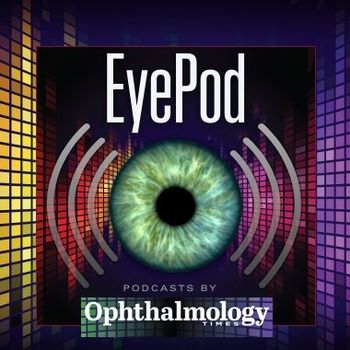
Exploring balance of controlling inflammation, IOP in uveitis
Clinicians need to weigh such factors as inflammation and IOP in determining when steroid therapy is beneficial in uveitic glaucoma.
Clinicians need to weigh such factors as inflammation and IOP in determining when steroid therapy is beneficial in uveitic glaucoma.
This article was reviewed by Gary N. Holland, MD
Los Angeles-Corticosteroids can be the best and the worst treatment for elevated IOP.
In the short term, corticosteroids alone may reduce IOP in a limited group of disorders during exacerbations of inflammation. But long-term use of those same corticosteroids can boost IOP, exacerbating uveitic glaucoma in patients with chronic forms of uveitis.
“Corticosteroid-induced ocular hypertension is a problem, but it is not the only pressure problem in people with uveitis,” said Gary N. Holland, MD.
“Uveitic glaucoma, glaucoma attributed to uveitis itself, is an even bigger problem. Don’t assume that all elevated pressure is due to steroids,” said Dr. Holland, professor of ophthalmology, University of California Los Angeles Stein Eye Institute. “Cutting back on steroids and letting ocular inflammation smolder at a low grade is counterproductive because it will result in more ocular damage, leading to even worse problems with glaucoma.”
Keeping inflammation under control
Dr. Holland discussed the complications of treating the inflammation associated with uveitis and uveitic glaucoma.
Corticosteroids are the preferred agents to bring inflammation under control rapidly, he noted. But patients who need long-term suppression of inflammation should be switched to immunosuppressive agents.
While uveitic glaucoma is more common in children than it is in adults, the considerations and strategies used to manage the condition are similar. The onset of uveitic glaucoma is earlier in children than it is in adults and tissue damage progresses more rapidly in children. The manifestations of uveitic glaucoma are more severe in children and the risk of glaucoma is directly related to the severity of uveitis. At the same time, children have an increased risk for ocular hypertension associated with corticosteroids.
The end result, Dr. Holland said, is that while children have the greater need for quick and complete control of inflammation, they are also at higher risk for elevated IOP due to steroid response.
“You should not sacrifice control of the inflammation for the sake of pressure control and assume that all pressure elevations are due to steroid response,” he said. “You have to deal with both inflammation and IOP. It is important to distinguish the cause of pressure elevations, which is a common problem in people with uveitis.”
The use of corticosteroids to manage uveitic glaucoma is not a simple issue, Dr. Holland continued. Steroids can both cause increased pressure and can be an effective treatment for increased pressure. And steroids can even be a confounding factor in interpreting changes in pressure.
Corticosteroids are almost always the first-line treatment for inflammation in uveitis, typically prednisone acetate 1% or equivalent. The faster inflammation can be brought under control, the better the long term outcomes.
In some patients, elevated IOP is a direct result of inflammation. Pressure soars at the onset of inflammation or during subsequent exacerbations. But the list of conditions in which inflammation directly elevates IOP is a short one: Posner-Schlossman syndrome; sarcoidosis; and several forms of infectious uveitis, including herpetic anterior uveitis caused by herpes simplex virus, varicella-zoster virus or cytomegalovirus; ocular toxoplasmosis, and syphilitic uveitis.
In these patients, increasing steroid dosing can cause IOP to fall as inflammation is brought under control. But knowing that topical steroids often increases IOP, it is easy to assume that elevated IOP is a steroid response when it is actually caused by inflammation.
Apparent steroid-response may actually be caused by a confounding factor. Many uveitis specialists have commented on what appears to be an inverse relationship between disease activity and IOP. When disease activity is high, IOP falls, possibly related to ciliary body dysfunction. When inflammation is suppressed by steroids, IOP may rise.
The relationship has been shown to be statistically significant, Dr. Holland said, but the increase in IOP following suppression of inflammation is relatively small in clinical terms. The larger problem is misinterpreting this mild rise in pressure as a steroid response when it is actually a manifestation of better uveitis control.
About 40% of children with chronic anterior uveitis are at risk for eventually developing uveitic glaucoma, he continued.
An elevated aqueous protein level (“flare”) is an important risk factor for progression to uveitic glaucoma. The relationship between elevated flare and glaucoma underlines the need for consistent, long-term control of inflammation in patients with chronic uveitis.
Because chronic use of topical corticosteroids tends to increase IOP, they are a poor choice for chronic treatment of inflammation in patients with uveitis.
“Most uveitis specialists are not comfortable using more than one or two drops of steroids daily on a prolonged basis,” Dr. Holland said. “We try to get patients off corticosteroids altogether. For chronic uveitis, it is much better to switch to a corticosteroid-sparring immunosuppressive agent. Methotrexate is the drug of choice unless there are medical reasons it cannot be used for a specific patient.”
Gary N. Holland, MD
This article was adapted from Dr. Holland’s presentation at the 2015 meeting of the American Academy of Ophthalmology. Dr. Holland did not indicate a proprietary interest in the subject matter.
Newsletter
Don’t miss out—get Ophthalmology Times updates on the latest clinical advancements and expert interviews, straight to your inbox.













































